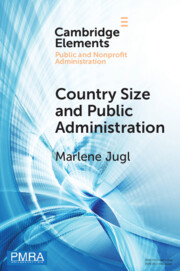Element contents
Country Size and Public Administration
Published online by Cambridge University Press: 10 June 2022
Summary
- Type
- Element
- Information
- Online ISBN: 9781009122887Publisher: Cambridge University PressPrint publication: 07 July 2022
References
- 14
- Cited by

